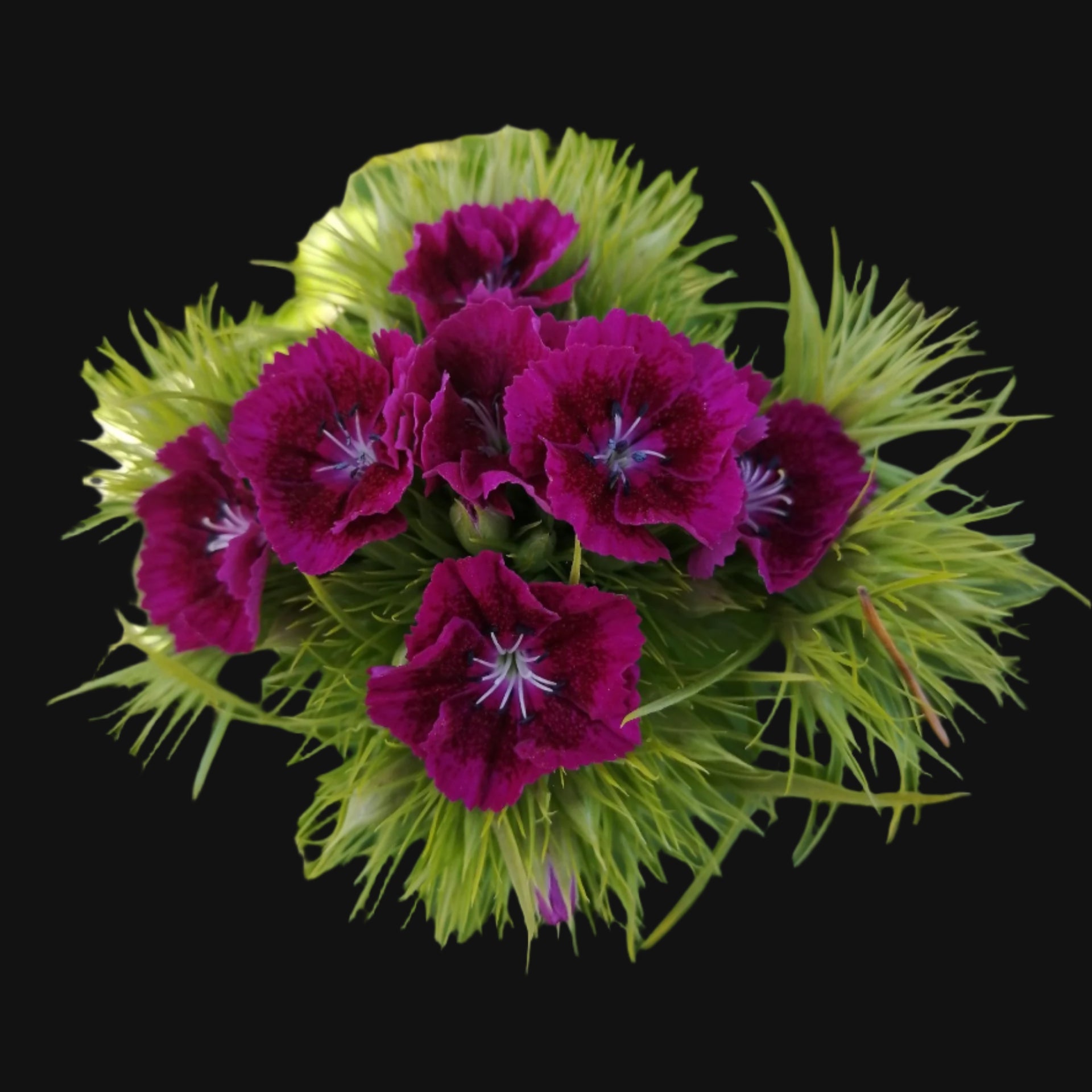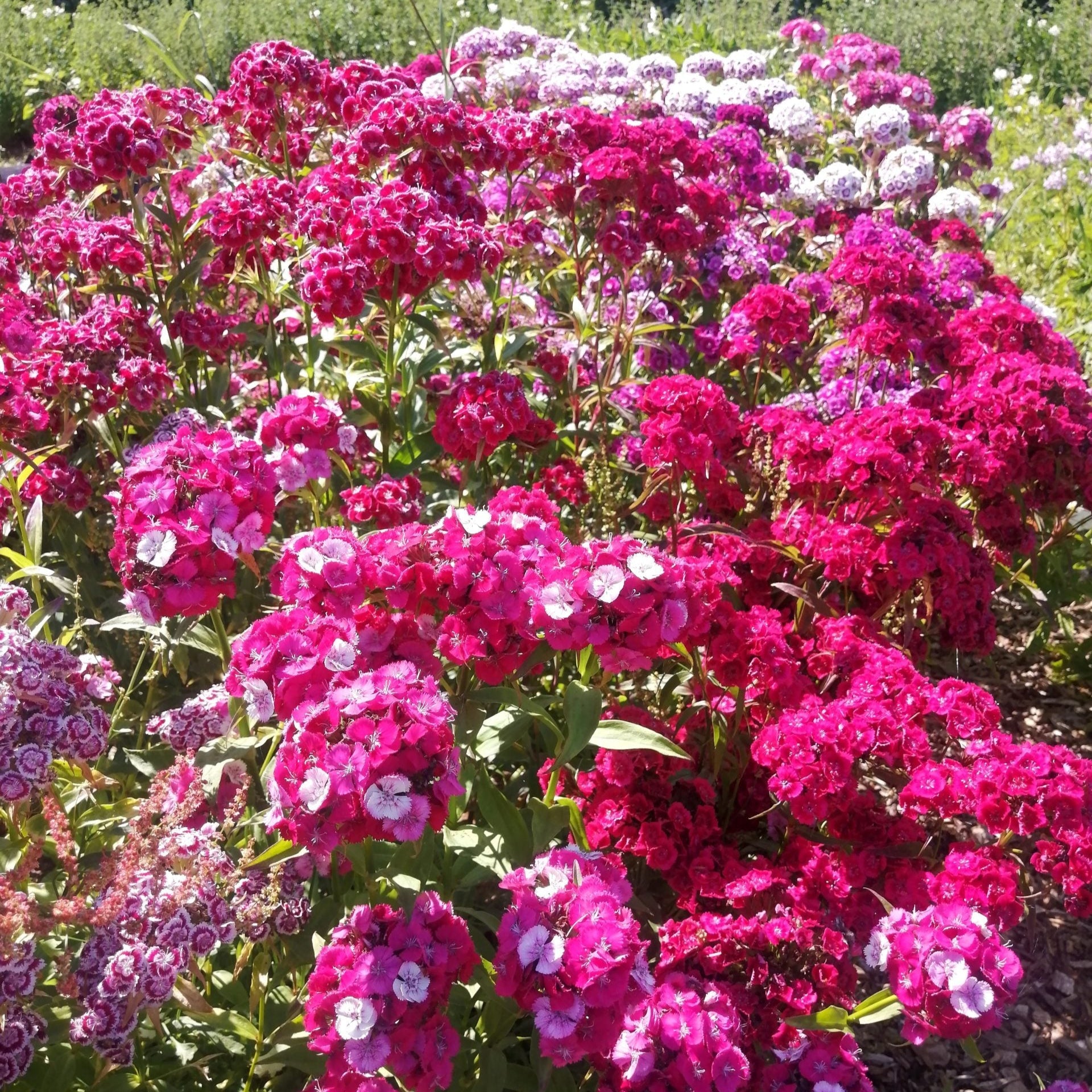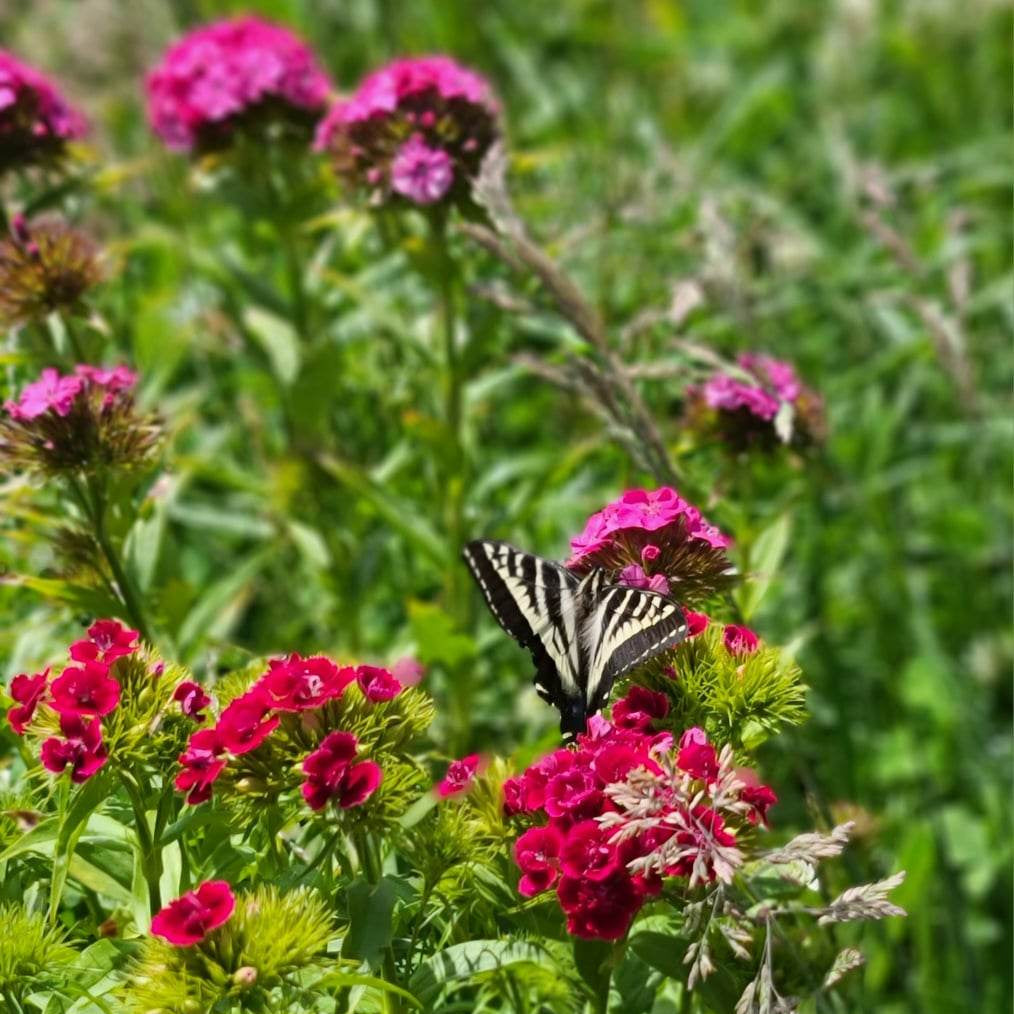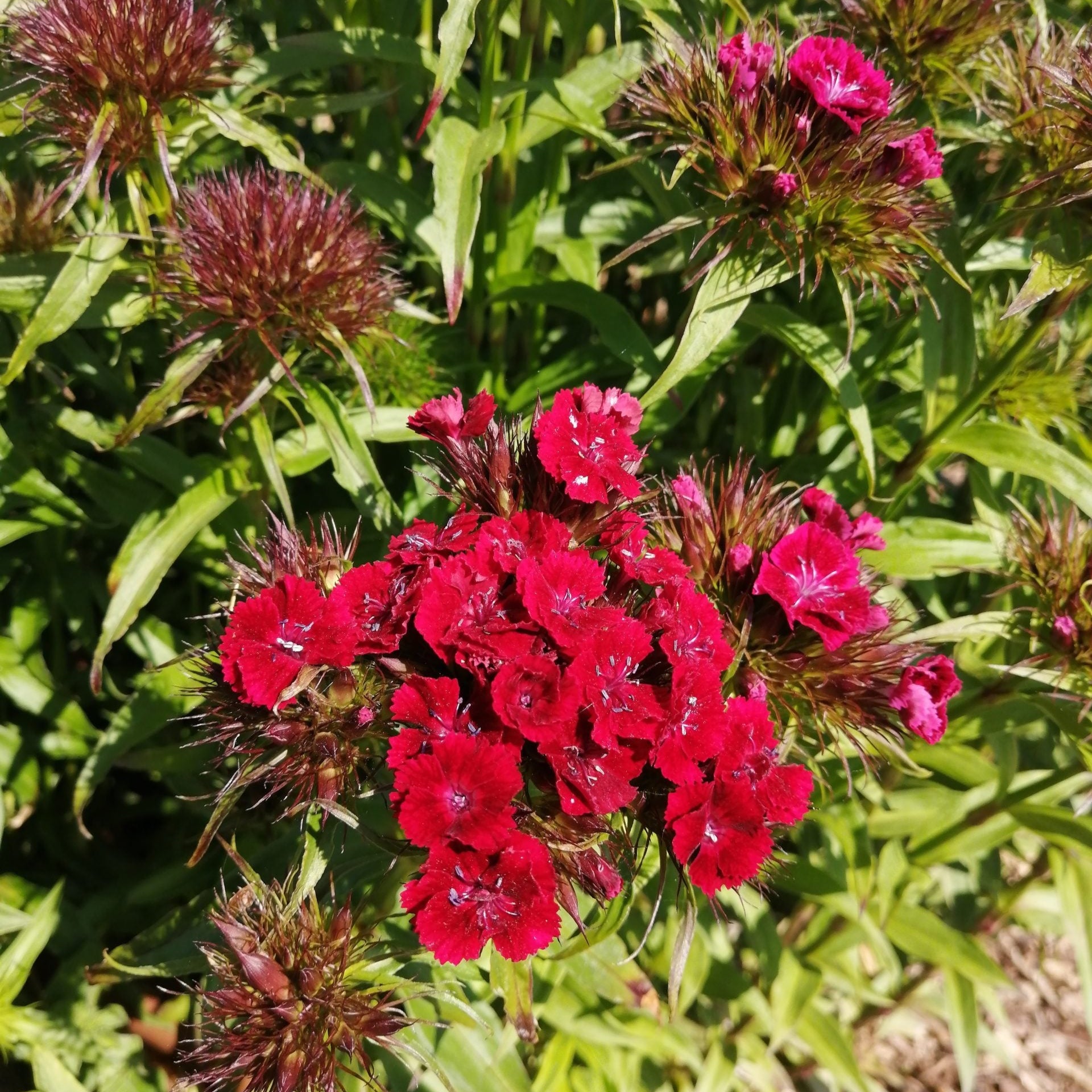
Sweet William
Sweet William, also known as dianthus, is a charming short-lived perennial that brings beautiful clusters of flowers in pink, red, and white to the garden. Blooming from their second year onward, these plants are wonderfully fragrant and highly attractive to butterflies. In coastal or mild climates, Sweet William often persists for several years, forming dense, colourful patches. Their sturdy stems and long-lasting blooms make them a classic and reliable choice for cut flower gardens and borders alike.
Where Can You Grow Sweet William?
Sweet William grows best in Zones 3–9 and prefers full sun to part shade with well-drained, fertile soil. It thrives in garden beds, borders, and containers, and appreciates regular deadheading to extend the bloom season.
History and Historical Uses
Sweet William has been a staple in European gardens for centuries, valued for its bold colouring and spicy-sweet scent. Traditionally grown for bouquets and cottage gardens, it remains a favourite among florists and pollinator-friendly gardeners.
Canadian Zone Information
Zones 8–9: Direct sow in autumn or early spring for second-year blooms.
Zones 5–7: Start indoors in early spring and transplant after frost.
Zones 3–4: Start indoors or direct sow in spring; mulch to overwinter.

How to Grow and Harvest Sweet William
Planting: Sow seeds 3mm (1/8in) deep, spaced 15–30cm (6–12in) apart.
Watering: Water regularly but avoid soggy soil.
Harvesting: Cut flowers in early bloom for long-lasting arrangements.
Maintenance: Deadhead spent flowers to encourage reblooming and self-seeding.
Seed Saving Tips for Future Supply
Allow to Flower and Seed: Let some blooms mature fully on the plant.
Harvest Seeds: Collect seed heads once dry and brown.
Dry and Store: Separate seeds from chaff and dry thoroughly.
Store: Keep in a cool, dry, dark place; viable for 2–3 years.
Certified Organic By
Islands Organics Producers Association (Cert#1962)


